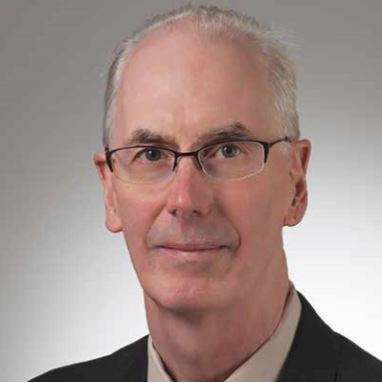John Harrington, M.D.
The importance of Gastrointestinal Endoscopies
 In the procedure known as gastrointestinal endoscopy, your doctor can see the inside lining of your digestive tract. This examination is performed using an endoscope (a flexible fiberoptic tube with a tiny camera at its tip). The endoscope image is projected on a video screen. The endoscopy enhances your doctor’s ability to diagnose gastrointestinal (GI) disorders such as ulcers, strictures and inflammation.
In the procedure known as gastrointestinal endoscopy, your doctor can see the inside lining of your digestive tract. This examination is performed using an endoscope (a flexible fiberoptic tube with a tiny camera at its tip). The endoscope image is projected on a video screen. The endoscopy enhances your doctor’s ability to diagnose gastrointestinal (GI) disorders such as ulcers, strictures and inflammation.
Dr. John Harrington, a board-certified physician in gastroenterology at LSU Healthcare Network explains how the use of GI has evolved. “The early endoscopes of the 19th century were rigid instruments with large lumens that lacked a lens system and were dependent on light provided by candle or flame,” he says. “In recent decades, we have progressed from instruments with semi-flexible rubber tips to the development of fiberoptic technology. We have come a long way.”
ENDOSCOPY BOTH WAYS
Endoscopy has several names, depending on which portion of your digestive tract your doctor seeks to inspect. An upper GI endoscopy (EGD) procedure is used to examine the esophagus, stomach and the upper small bowel (the duodenum). A colonoscopy utilizes a lubricated flexible tube inserted through the anus to view the rectum and colon (the large intestine).
Gastroenterologists perform a variety of GI services. “We utilize the esophago-gastro-duodenoscopy (EGD) and colonoscopy for diagnosis as well as therapy,” Dr. Harrington says. “Upper GI endoscopies can help us find the cause of unexplained symptoms such as nausea, difficulty swallowing or unexplained weight loss. Colonoscopy procedures allow us to view the mucosal lining of your intestine, abnormal growths and bleeding sites in your colon.”
Common digestive disorders addressed by GI physicians also include gastroesophageal reflux (GERD) disease, colon polyps, ulcers, irritable bowel syndrome, Crohn’s disease and colitis. Doctors also use GI endoscopy to:
- treat conditions such as bleeding from ulcers, esophageal varices or other conditions
- dilate or open up strictures with a small balloon passed through the endoscope
- remove objects, including food, that may be stuck in the upper GI tract
- remove polyps or other growths
- place feeding tubes or drainage tubes
- biopsy any abnormalities that are detected
TEAM WORK
Dr. Harrington has more than 25 years of experience practicing gastroenterology. A native of Columbus, Miss., he earned his medical degree from the University of Mississippi School of Medicine. After completing his residency in internal medicine at Tulane University School of Medicine, he completed his fellowship in gastroenterology at LSU Medical Center in New Orleans.
Gastroenterologists work alongside multiple specialty physicians. “At LSU Healthcare Network, we see patients with common diseases such as reflux, abdominal pain, constipation and diarrhea, as well as more complicated diseases like gastrointestinal bleeding, cancer and inflammatory bowel disease (Crohn’s disease and ulcerative colitis),” Dr. Harrington says. “We work with an alliance of compassionate, competent, caring healthcare professionals committed to continually improving patient care through evolving technology and professional development. Our team of nurses, medical assistants, fellows in training, physicians’ assistants, nurse practitioners and doctors all work together with your healthcare in mind.”
Dr. Harrington’s practice focuses on providing expert and painless endoscopic procedures to patients in Jefferson Parish and the River Parishes. Since joining LSU Healthcare Network, Dr. Harrington has returned to a practice location in Metairie and added a new location at 301 Rue de Sante in LaPlace. He continues to do endoscopies at South Lake Surgery Center, East Jefferson General Hospital and Alliance Surgery Center.
The newest location, South Lake Surgery Center, is a freestanding multidisciplinary ambulatory surgery center located in LaPlace offering orthopedics, gynecology, ophthalmology, gastroenterology, general surgery, urology, pain management and ENT surgical services. The 9,700-square-foot facility is equipped with four operating rooms and seven post-operative rooms. “At South Lake Surgery Center our patients are able to avoid the time and expense of traveling to hospital-based facilities outside of the parish,” Dr. Harrington says.
John Harrington, M.D.
LSU Healthcare Network
3601 Houma Blvd., Ste. 302
Metairie, LA 70006
(504) 412-1600
Medical School: University of Mississippi School of Medicine
Residency: Tulane University School of Medicine
Fellowship in Gastroenterology: LSU Medical Center
Board Certification: Internal Medicine and Gastroenterology
